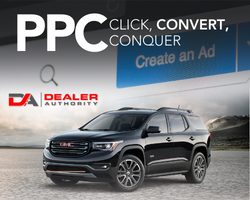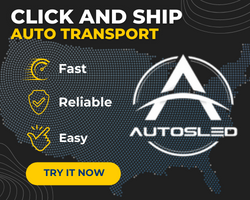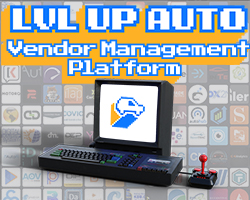It’s not just about branding. It’s about FOOT traffic!
This is the last part in a 4 part series about automotive social media strategies that are emerging to help car dealers get true benefit.
It’s not just about branding. It’s not about auto-feeding marketing content. With the right strategies in a place, dealers can drive foot traffic and website visitors in a way that can help them sell more vehicles and drive more service customers.
Over the last few months as we’ve explored some best practices surrounding social media marketing for the automotive industry, we’ve learned that there are three stages to a strong presence, that its goal should be to drive more business, and that the data is the key to taking full advantage of the platforms. Now, we’re going to finish it up by discussing the easiest way get the value out of social media: using your dealership staff to take your presence up a few notches.
By “easiest”, I’m not saying that it’s easy to get the buy-in necessary to make it effective. That’s the hardest part. Thankfully, it only takes a handful of employees, particularly in sales and the service drive, to make a huge impact. If you can get a few people to start participating (and sharing this article with them can be a great first step) then the success you are able to generate as a result will get more people to want to be involved.
Let’s start with the village… I mean dealership.
It Takes a Dealership
In 2007, Democratic Presidential hopeful Hillary Clinton said, “I still believe it takes a village to raise a child.” She was referring to the book she published a decade early as First Lady titled It Takes a Village: And Other Lessons Children Teach Us. I didn’t read the book. I don’t necessarily agree with the concept. I do, however, believe that the premise holds true for building up a powerful presence for a dealership on social media.
Chances are there is one person at your dealership or a couple of people at your dealer group that handles all of your social media. Having people at the point to keep it organized is important, but there is so much that can be done when multiple people at each store participate in making your social media sing.
We’ll discuss what they can be doing later in the article, but the first step is getting them interested and involved. It starts by involving them in the profiles directly. Most in our industry enjoy publicity. We enjoy being in the spotlight and having others see us and talk about us. In fact, those who are shy and trying to find success on the sales side of the business are probably not positioned properly. If they don’t like being in front of the camera and having their face plastered in front of thousands of people on automotive social media, they might want to consider a career change.
Take pictures. Shoot videos. Post about your staff on Twitter, Facebook, Google+, Pinterest, and Instagram. Get a salesperson to do a quick walkaround of a car and post it up there. Shoot a Vine of the finance manager explaining in a few seconds that taking GAP insurance protects the huge investment that buying a car represents. Grab a picture of the used car manager tossing a Nerf football around the showroom floor, mentioning how his college quarterback form was still intact. Mix all of this in on your Facebook page and now they’re already participating without putting in much effort.
It doesn’t matter how much they deny it. They like it. They’re checking it. They’re seeing how many people like their post and are reading every comment. This is the seed. Plant it. From there, you need to keep on them and see who is willing to step up and participate even more.
Let’s face it – they probably have the time available to help. They just need some guidance.
The Basics
This part should all go without saying, but just in case…
Active participants in the various social networks should be helping to promote your posts at the very least. Not everyone will and it’s difficult to make them. There are “purists” on your team who feel that their social profiles are completely personal and who are unwilling to pollute any of it with work-related activities. That’s fine. It’s their prerogative.
For those who are active and willing, the simplest way for them to get involved is simply to support what your dealership is doing on social media. That means liking the Facebook page, following the dealership on Twitter, and doing the same for all other relevant accounts on which they’re active. If they’re not active on a particular social platform, you do not want them following/liking your pages. This is important. We’re not looking for fluff. On Facebook in particular, having an employee like your page when they’re not regularly active on the network can do more harm than good. If they’re just liking their page because they’re told to and they only visit Facebook when the reminder goes out to like some posts on the page, they are not helping at all. You want active users only.
Make sure that everyone knows that liking, sharing, and commenting is most beneficial when it happens from the Facebook news feed. If they visit the page and just bulk-like a bunch of things once or twice a month, it’s not helping. It might be hurting. If they like a few things in the beginning to get the algorithm to recognize their preference for your page’s content, then it should start appearing more in their news feed. Those engagements are much more beneficial than the ones that happen on the page level.
Lastly, make sure their engagement is meaningful. This isn’t about inflating numbers. It’s about adding value to the conversation. If they’re going to comment, make sure their comment is appropriate.
Getting them involved might take a few emails and perhaps some coaxing from the top, but a handful of active employees can help increase the exposure of your message.
The Advanced
Those who rise to the challenge and ask how they can help have all the tools they need in their pocket. That smartphone that they’re on throughout the day can shoot the videos and take the pictures you need to get a real story going on your social media presence.
Some dealerships do a good job of getting pictures of smiling, happy customers in front of their cars. Others do not. Either way, take it up a few notches with better shots. The standard images are relatively worthless. People who see the posts are less likely to interact with them when they’re the boring images that everyone takes. Add some spice. If your salespeople are in control of the situation (and they should always strive to be in control of the situation) then they should be able to do much better than pictures of people standing in front of their car.
I remember a spiff that a sales manager used to offer us when I first started selling cars in the 90s. The first sales person of the day who could get a customer to climb into the trunk of the car got $100. It was all about control. It was about building a strong enough relationship and having enough control over the situation to get someone to do something that they would normally never do.
No, I’m not suggesting that you should be taking pictures of people in the trunks of their new cars and posting them on Facebook. The point is that your team should be able to get better pictures than people standing there smiling. Get pictures of them jumping up in excitement. Get them in their car sticking their head out of the moon roof. Get them to hold a sign that says something fun like, “I bought this from Brad at XYZ Motors and I loved the experience.”
Get them to talk about their trade. We see videos all the time talking about how they enjoyed buying a car from the dealership, but where are the videos about the trade in? If there’s a compelling story, it’s something that can generate interest in a particular vehicle. “I bought this car four years ago at XYZ Motors and it’s been incredible. I’ve had it services here religiously and it’s in amazing shape. I would drive it for at least another four years but as you can see (points to belly) we have another child on the way, so we traded our Camry for this new Sienna.”
There are so many ways that your team can participate and give the dealership the personal touch it needs to stand out on social media. I could dedicate a whole blog post on that topic alone.
The Goods
All of those things are relatively easy and getting involvement won’t be too hard if you’re diligent. The hard part is getting “The Goods”.
A dealership that wants to really succeed on social media must be asking nearly every person that buys a car or gets their car serviced to participate with the dealership online. This is hard. It takes a process. It’s so hard that we don’t even offer it to our own clients until we’ve worked with them for a few months and have confidence that they we can make it happen with them (notice I didn’t say for them).
This part can take more than a blog post to get the full details out there, so I’m going to shorten it to the bullet points. These are the things that you’ll need in order to take your social media presence up exponentially through your dealership staff:
- Social Media Exit Interview: You probably have a sentence that every sales person is taught regarding CSI. It’s probably a line on your delivery checklist that may or may not actually happen. If the dealership is bought into using social media to promote the dealership, then it goes beyond a sentence. It’s an interview. You want to know if they’re active on Facebook, Yelp, Google+, Twitter, or any of the other social networks. From there, you’ll want to give them a reason to do things without incentives. I am horrified when I hear of dealerships asking for Yelp reviews in exchange for a free oil change. If they write a review without disclosing that they received something for the endorsement, you and they are committing a federal violation. However, a simple incentive such as, “Please like our Facebook page. We occasionally post Facebook-only service specials there as well as useful information to help our customers enjoy their cars even more.”
- Non-Annoying Follow Up: A great sales person who wants to use social media for networking their business will soon find the value of becoming friends with their customers on Facebook. These friends should be grouped together so that messages intended for them alone (bird dogs, customer appreciation posts, etc.) won’t pollute their standard Facebook presence. It’s also a great way to stay connected long-term. Sending them a birthday message or congratulating them on their new job, for example, is an easy way for a sales person to remain engaged with their customers months or even years down the road. When it’s time for them to trade in the car they just bought, chances are they don’t have their salesperson’s business card.
- Promotion of Events: The Facebook algorithm gives preference to user posts over page posts. Since 80% of an employee’s Facebook friends are within driving distance to the dealership, having them mention the big sale this weekend or the March of Dimes walk your dealership is sponsoring will reach people more effectively when sent from a friend rather than a page. This isn’t just about sharing a post from a page. It’s as simple as a short personalized message. “I can’t wait until the sale at XYZ Motors this weekend because Shelly is working the grill and her burgers are out of this world.”
- Building Influencers: The biggest risk with getting members of your team to post a lot about your cars, the store, and their own experiences is that they can truly generate their own business following. People like Ralph Paglia, Robert “Your Huyndai Guy” Wiesman, and Jeff Kershner were able to build incredible followings locally and nationally through their prowess on social media. They, of course, have left the retail side. It’s always a risk. You may have the next Kershner at your store ready to be unleashed. You may be the next Kershner yourself. The dealerships that they helped to grow all wish they never lost them, but they benefited from them while they were there. Building influencers has risks, but being there for the ride while they’re at the store will drive more business.
These and other techniques you can use in your strategy can make a huge impact on your dealership’s exposure and help to drive more sales. I know it’s very slanted towards Facebook, but at the end of the day the network accounts for 90% or more of the juice available in the wild world of social media.
This long article is, unfortunately, just a quick overview. There are so many more details that could be discussed regarding the involvement of your team and their ability to help the dealership’s (and their own) bottom line. Getting buy-in is the toughest part. Having the commitment necessary to make it happen is the key to success. Think about it all. Make a decision about whether or not you can make it happen. If you can do it and if you stick with it, your dealership will sell more cars as a result.
The most important part is to share ideas. This is far from comprehensive. Think of it as a spark to the conversation. What have you done at your dealership to drive more sales through social media?








